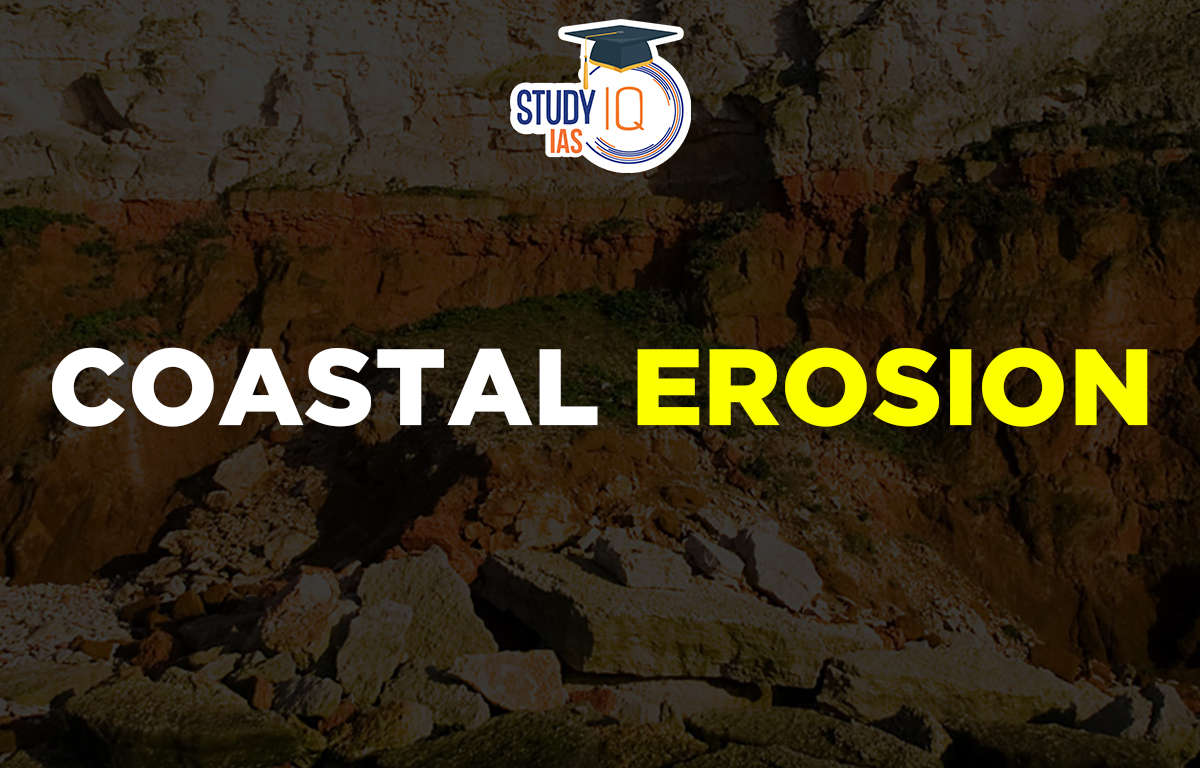Table of Contents
Key Findings of the Assessment

- Incidence of coastline erosion: The assessment found that 16.16km or 1.63% of the coast has seen high erosion, 37km or 3.75% moderate erosion and 369.69km or 37.28% has seen low erosion.
- Overall during 1990 and 2018, Tamil Nadu has lost 1,802 hectares of land due to erosion.
- According to the report, Tamil Nadu ranks fourth in India experiencing worst coastal erosion after West Bengal (60.5%), Puducherry (56.2%) and Kerala (46.4%).
- Coastal accretion: The assessment made for the 1990-2018 period has also seen nearly 24% of the coast accreting or accumulating sand and around 34% of the coast is stable.

- Major causes: Both natural events like cyclones, sea level rise, waves and tides as well as activities like construction of ports and harbours, seawalls and beach sand mining led to erosion and accretion.
What is Coastline Erosion?
- Coastal erosion or Coastline erosion is the loss or displacement of land, or the long-term removal of sediment and rocks along the coastline.
- Coastal erosion may be caused by hydraulic action, abrasion, impact and corrosion by wind and water, and other forces, natural or unnatural.
Major Causes of Coastal Erosion
Natural Causes
- Action of waves: As waves move toward the shore, waves break and the turbulent energy is released to the water column. This energy stirrup and moves the sediments deposited on the sea bed.
- Winds: Winds act not just as generator of waves, but also aids in the landward movement of dunes (Aeolian erosion).
- Tides: The tide carries sediments, transporting physical materials that erode coasts with the ebb and flow of ocean water.
- Nearshore currents: Sediments scoured from the seabed are transported away from their original location by currents.
- Storms: Storms generate storm surges and high energy waves which may result in catastrophic coastal erosion.
- Sea level rise: Sea level rise can also increase coastal erosion because waves can extend further up and along beaches and cliffs.
Anthropogenic Causes
- Dredging of tidal entrances and navigation channels.
- Construction of harbours and coastal structures such as groins and jetties.
- River water regulation works such as damming.
- Destruction of mangroves and other natural buffers.
- Beach sand mining.
Incidence of Coastline Erosion in India

Impacts of Coastline Erosion

Measures to Prevent Coastline Erosion
- Hard structural/engineering options:
- Groyne: A coastal structure constructed perpendicular to the coastline from the shore into the sea to trap longshore sediment transport or control longshore currents.
- Seawall: A seawall is a structure constructed parallel to the coastline that shelters the shore from wave action.
- Offshore breakwater: An offshore breakwater is a structure that parallels the shore (in the nearshore zone) and serves as a wave absorber.
- Artificial headland: This structure is constructed to promote natural beaches because it acts as an artificial headland.
- Soft structural/engineering options:
- Beach nourishment: The aim of beach nourishment is to create a wider beach by artificially increasing the quantity of sediment on a beach experiencing sediment loss, improving the amenity and recreational value of the coast and replicating the way that natural beaches dissipate wave energy.
- Dune building/reconstruction: Sand dunes are unique among other coastal landforms as they are formed by wind rather than moving waters; they represent a store of sand above the landward limits of normal high tides where their vegetation is not dependent on the inundation of seawater for stability.
- Coastal revegetation: Based on studies and scientific results, the presence of vegetation in coastal areas improves slope stability, consolidates sediment and reduces wave energy moving onshore; therefore, it protects the shoreline from erosion.


 UP Lekhpal Notification 2025 Out: Apply ...
UP Lekhpal Notification 2025 Out: Apply ...
 List of National Parks in India 2025, Ch...
List of National Parks in India 2025, Ch...
 Bihar BPSC 70th Mains Result 2025 Out: C...
Bihar BPSC 70th Mains Result 2025 Out: C...

























